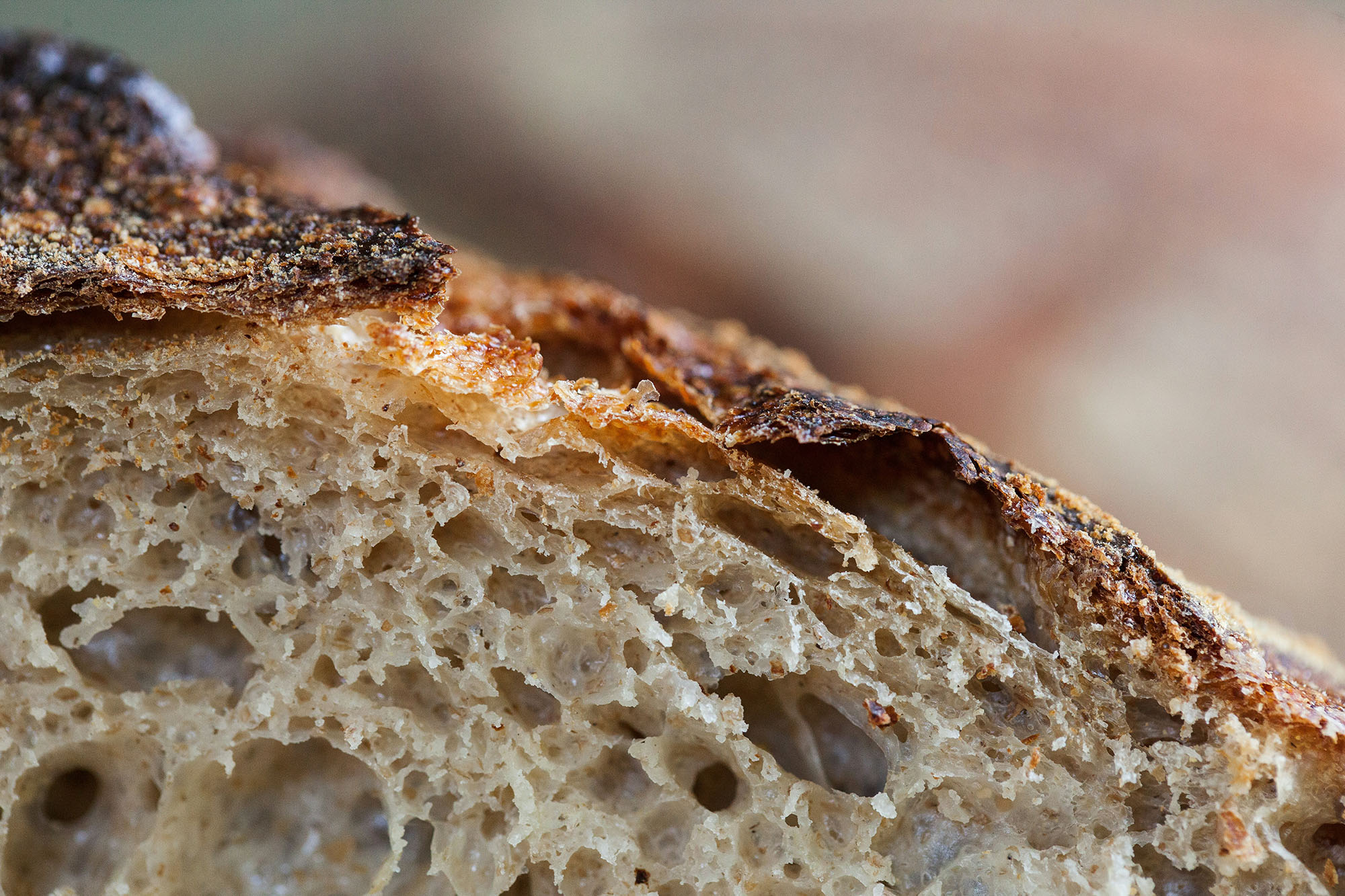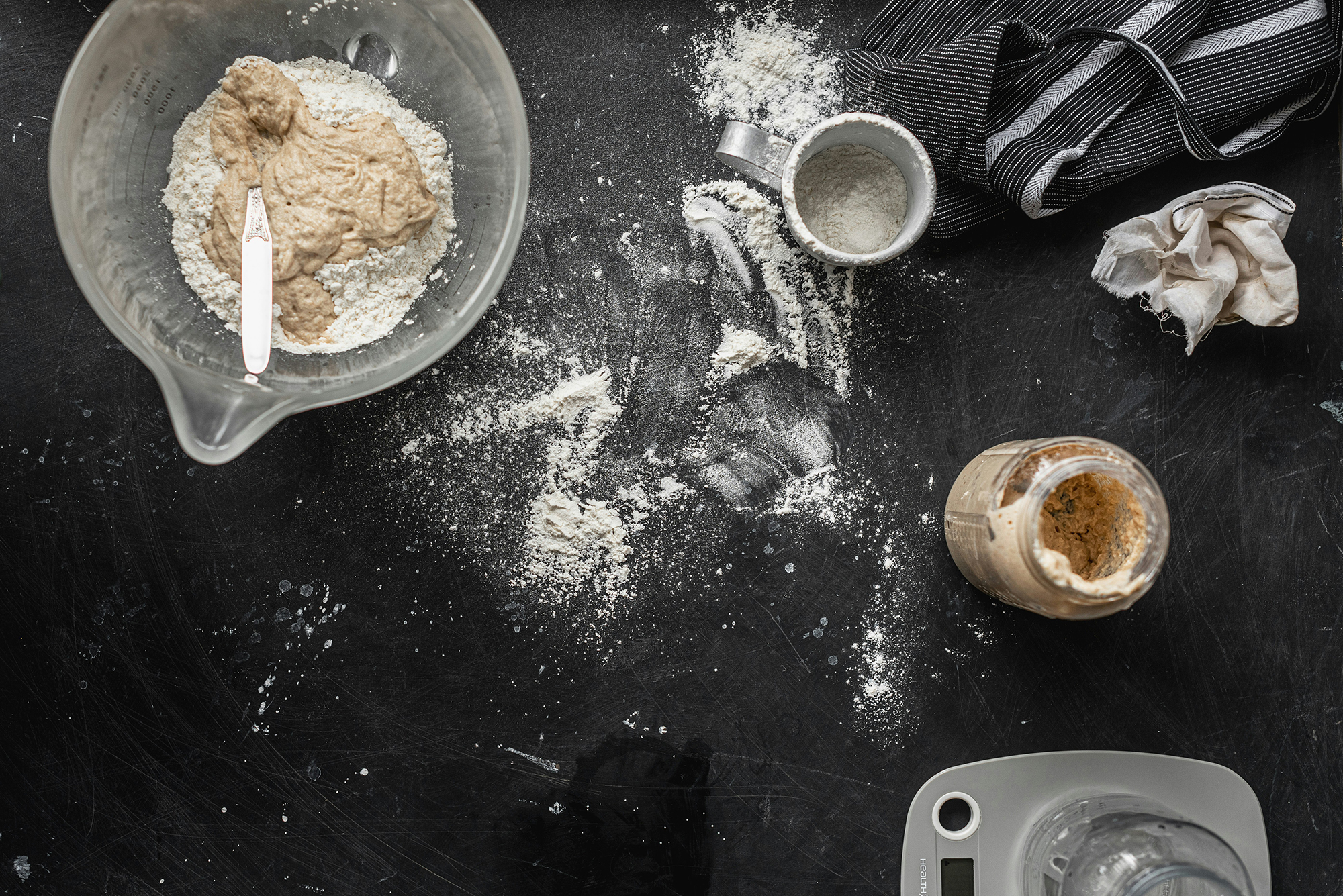Making sourdough can feel like a blend of art and science, and every baker – beginner or seasoned – runs into some hurdles along the way. From a flat loaf to an underwhelming rise, sourdough brings unique challenges. But don’t worry! Together we’ll tackle some of the most common sourdough issues and how to troubleshoot them, so you can bake with confidence and enjoy every bite.
1. Flat or Dense Loaf
One of the most common disappointments for sourdough bakers is ending up with a loaf that’s flat or overly dense. There are a few potential culprits for this:
- Underproofed Dough: If your dough hasn’t risen enough before baking, it can lead to a dense loaf. Try giving your dough more time to proof, either at room temperature or in the fridge for a slow, cold ferment. Look for signs like a puffy, airy dough that has risen by about 50% for optimal results. You can also do the poke test (poke the dough gently, and if it bounces back slowly all the way, or most of the way, it is ready to bake).
- Weak Starter: A weak or inactive starter won’t give your dough the rise it needs. Make sure your starter is bubbly and doubling in size within 4-6 hours of feeding before you use it in your recipe.
- Not Enough Gluten Development: Sourdough needs a strong gluten network for structure. This can happen because the starter is weak, if you use flour with not enough protein, or if you don’t do stretch and folds when your recipe calls for them. (Just to note, I never do stretch and folds with the recipe I use and the loaves always turn out fab!)
2. Overly Sour or Bland Flavor
If your sourdough tastes too sour or, conversely, lacks any tang, there are adjustments you can make to balance the flavor:
- Too Sour: Sourdough flavor can get overly tangy if the dough ferments for too long or if it’s proofed at a warm temperature. Try reducing the proofing time or fermenting your dough in the fridge, which promotes a milder, more balanced flavor.
- Too Bland: If you’re not getting enough sour flavor, increase the fermentation time or try using whole grain flour in your starter, as this tends to produce a more robust tang. Proofing your dough at room temperature instead of cold-fermenting can also help boost flavor.
3. Sticky or Hard-to-Handle Dough
Sticky dough is a common challenge, especially for beginners. If your dough is hard to handle, here are some tips:
- High Hydration: High hydration (more water) makes dough stickier but also helps with an open crumb. Try reducing the water by 5-10% if you’re finding it too hard to handle.
- Flour Types: Lower-protein flours, like all-purpose flour, can result in stickier dough. Try using bread flour, which has a higher protein content and adds structure to the dough.
- Resting Period: Allowing your dough to rest (autolyse) for 20-30 minutes before kneading or folding can help the flour fully hydrate and make the dough easier to work with.
4. Crust Is Too Hard or Thick
While a crispy crust is one of sourdough’s trademarks, an overly thick or hard crust can be less than desirable. Here’s what to check:
- Steam in the Oven: Steam is essential for a thinner crust. Baking in a covered Dutch oven helps trap steam, creating a nice crust without making it overly hard. If you’re not using a Dutch oven, place a tray of water in the oven during the first 15-20 minutes of baking to add moisture.
- Baking Time and Temperature: If the crust is still too thick, try lowering your baking temperature by 10-20°F or reducing the baking time slightly. You can also bake at a high temperature initially, then reduce it for the remaining time.
5. The Dough Didn’t Rise Much During Proofing
If your dough doesn’t seem to be rising as it should, consider the following:
- Inactive Starter: Make sure your starter is healthy. If it isn’t doubling in size after feeding, try refreshing it more frequently to build up its strength.
- Temperature: Sourdough is very sensitive to temperature. If your kitchen is cool, the dough may take longer to rise. Try proofing in a warmer spot, or simply give it more time to rise. I don’t recommend proofing in an off-oven, because I’ve seen too many people forget it’s in there and turn it on, ruining the dough.
6. Uneven or “Exploded” Scoring
Scoring can feel like an art form, and sometimes you might end up with a loaf that didn’t expand as planned. Here’s what could be causing uneven or “exploded” scoring:
- Underproofed Dough: If your dough hasn’t had enough time to rise, it may expand unpredictably in the oven. Allowing for a full rise before baking helps with even scoring.
- Too Shallow or Deep Scoring: If your score is too shallow, the dough might burst in other areas. If it’s too deep, it can lose structure. Aim for a confident, smooth score about ¼ inch deep.
7. Large Air Pockets or “Tunneling” Inside the Loaf
While many love an open crumb, giant air pockets can make slicing difficult. Here’s what to look for:
- Underdeveloped Gluten: If the gluten isn’t developed enough, large air pockets can form. Make sure you’re using enough folds and allowing enough rest time for a well-structured dough.
- Handling During Shaping: Overhandling can pop some of the air pockets and leave others too large. Be gentle during shaping to keep the air distribution even.
8. Sticky, Gummy Interior
A gummy interior is usually a sign of underbaking or underproofing. To solve this:
- Internal Temperature: Use a baking thermometer to check the internal temperature of your loaf. It should be around 200°F (93°C) for a fully baked bread.
- Overproofing: Overproofed dough can collapse slightly in the oven, leading to a denser, gummy interior. Keep an eye on the dough during the final rise to avoid overproofing.
Sourdough is as much about the journey as it is the final product. Each bake is an opportunity to learn and refine your technique, so don’t get discouraged by a few hiccups along the way! With a little practice and patience, you’ll find yourself troubleshooting with confidence and turning out beautiful, delicious loaves. Remember, every bake – even the challenging ones – brings you one step closer to mastering sourdough. Happy baking!





Leave a Reply